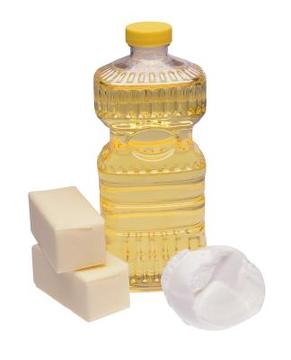- About DPH
- Our Services
- Our Programs
- Healthy Living
- Records, Permits & Licensing
- Knowledge Sharing & Collaboration
- Diseases & Conditions
- Training
Helpful Links
Related Programs
Program Contact
(415) 252-3800

Trans Fat Ban Program
SFDPH Environmental Health Branch is responsible for ensuring compliance with Section 114377 of the California Health and Safety Code. Section 114277 requires that "no food containing artificial trans fat may be stored, distributed, served, or used in the preparation of any food within a retail food facility in the state of California". The code also requires that every food facility maintain on the premises the label for any food or food additive that is, or includes, any fat, oil or shortening. Violations are punishable by fines not less than $25 or more than $1,000.
Frequently Asked Questions About Trans Fats
What is trans fat?
Trans fat, also known as trans fatty acid, is made when manufacturers add hydrogen to vegetable oil, a process called hydrogenation. Hydrogenation increases the shelf life and stability of oils and food containing these fats. Common forms of trans fat are vegetable shortening, margarine, or any kind of partially hydrogenated vegetable oil.
What are some common trans fat products?
Products containing trans fats include cakes, cookies, crackers, pies, bread, fried foods, and frozen food products.
Why is trans fat banned in California?
Trans fat increases a person's risk of heart disease, stroke, and diabetes by raising levels of bad cholesterol (LDL) and lowering levels of good cholesterol (HDL).
Who does this ban apply to?
The California trans fat ban applies to all food facilities except public schools, which are already prohibited from serving trans fat.
How can I tell if a product is allowed under the regulation?
Step 1: Check the nutrition facts panel.
- If the product contains less than 0.5 grams of trans fat per serving it is approved for use.
- If the product contains 0.5 grams or more of trans fat per serving go to step 2.
Step 2: Check the ingredients list.
- If the ingredients list contains vegetable shortening, margarine, or any kind of partially hydrogenated oil, the trans fat is artificially produced and the product is not approved for use.
- If the product does not contain the above mentioned ingredients, but still contains 0.5 g or more of trans fat, then the trans fat is naturally occurring and the product is approved for use. Certain meats and dairy products contain naturally occurring trans fat.
Step 3: If there is no nutrition facts panel or ingredients list, ask your supplier to provide a letter from the manufacturer with the product's ingredients and trans fat content per serving.
Are prepackaged goods that contain artificial trans fat exempt?
Yes, food/food products sold to the public in the original, sealed package are exempt. If a facility opens the package and uses or serves the food (even as samples), the food is no longer exempt.
What is the FDA Order on trans fat?
More information on the Food and Drug Administration (FDA) order pertaining to partially-hydrogenated oils (PHOs), which takes effect June 18, 2018, may be found on our Trans Fat FDA Order information page.

